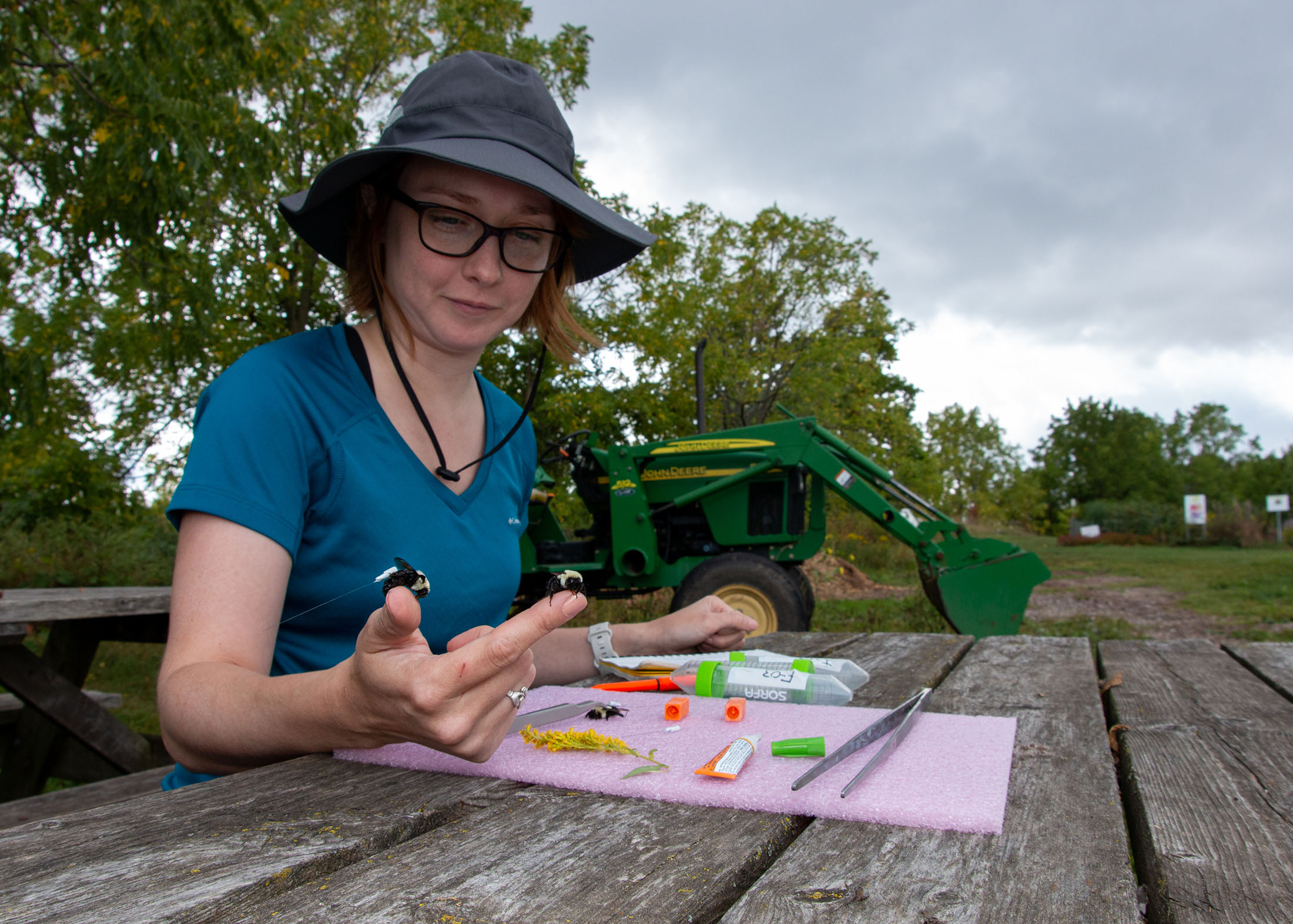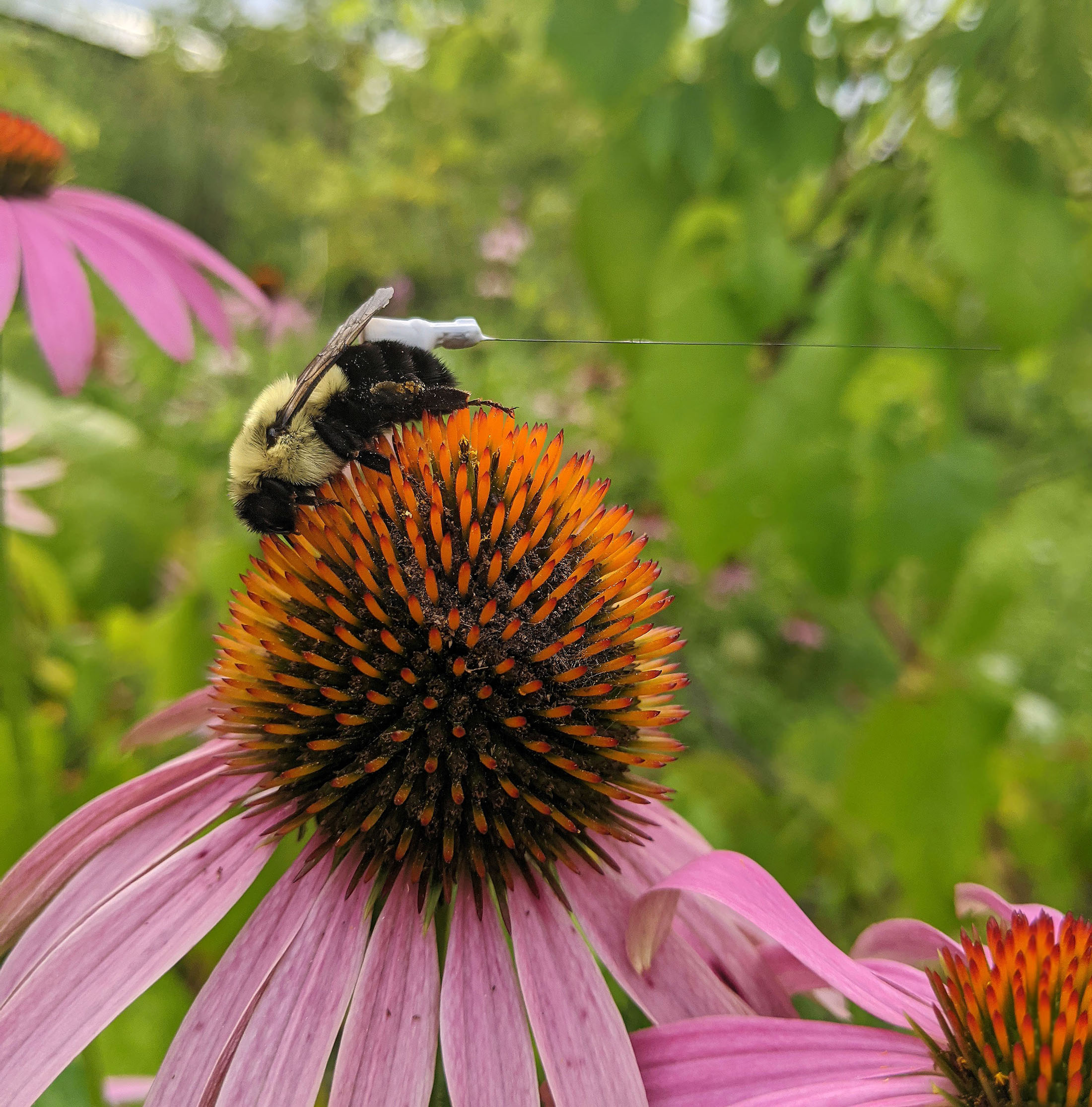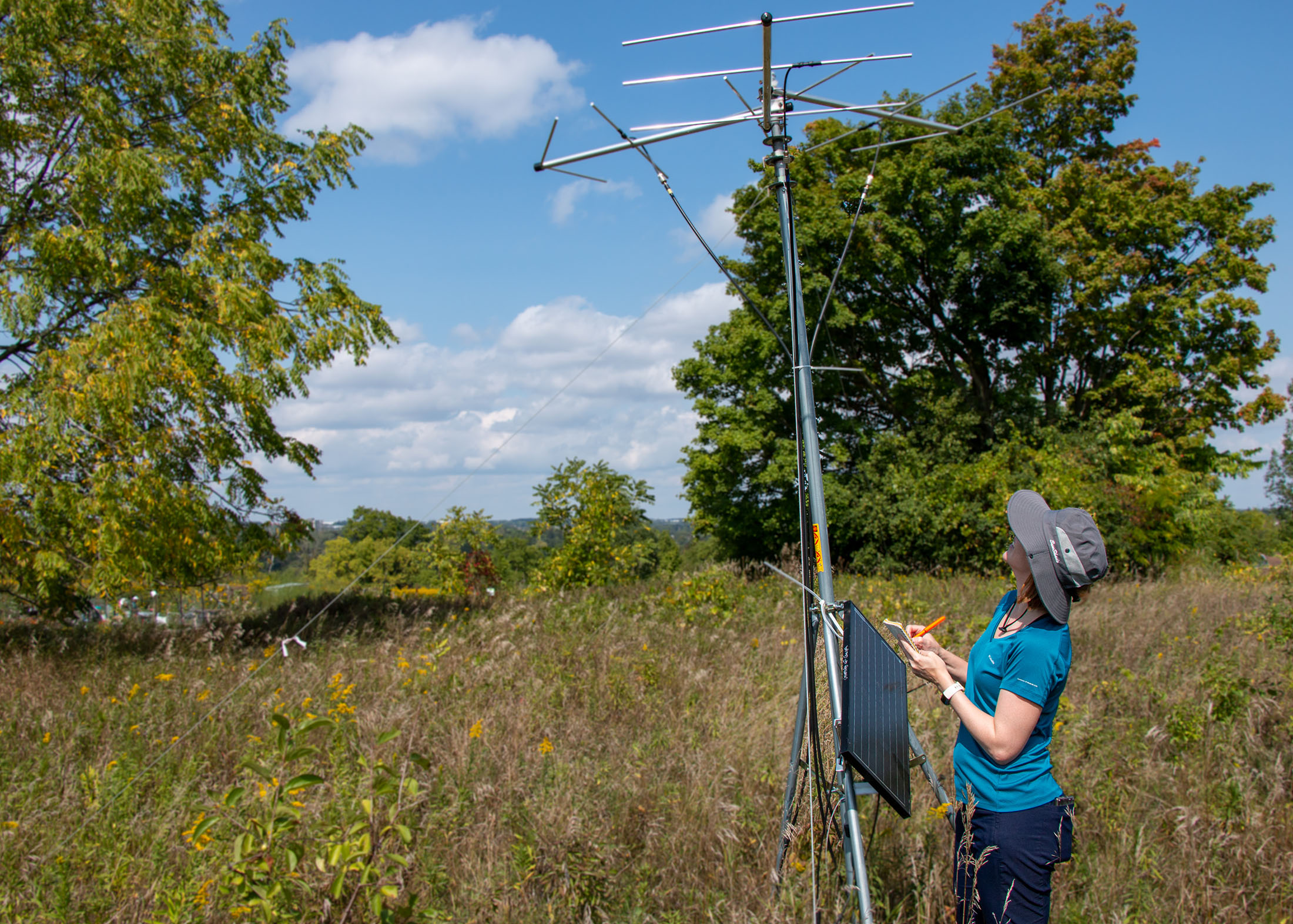Learning their needs by tracking the bees
Bumble bees need at least 3 resources to survive: flowers (their
food source), nest sites (to raise their young), and overwintering
sites (for queens to hibernate for the winter). However, we know
very little about their nesting and overwintering habitat, partly
because these sites are so hard to find - they are usually
underground!

We also know very little about their movement behaviour and habitat
selection. For larger animals, it has been easier to track their
movements using radio collars or GPS collars that send a signal
giving the animal's location. Until very recently the technology has
not existed for researchers to be able to follow smaller animals
such as bumble bees.
In this project we tagged spring bumble bee queens and late summer
bumble bee queens to learn more about their movement behaviour,
habitat selection, and about their nesting and overwintering habitat
locations.
We are still analyzing the data, but it appears late-summer queens often return to the same areas and can be active for up to 50 days. They also may overwinter at the same location with many other queens.
We are still analyzing the data, but it appears late-summer queens often return to the same areas and can be active for up to 50 days. They also may overwinter at the same location with many other queens.


Their movements are tracked using radio towers set up at our study
sites. Using this data, we have compared the flight distance, home
range, habitat usage and selection of bumble bee queens. The results
are still preliminary, but it unfortunately looks like a newer class
of pesticide called diamides are just as harmful as neonicotinoids
when we look at their flight behaviour.